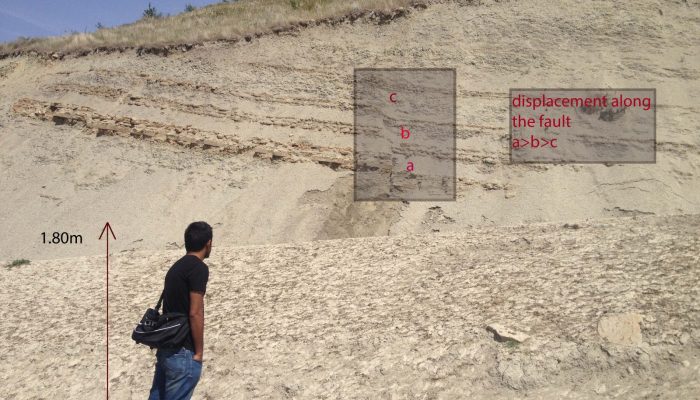As we have seen in previous Features from the field posts, structural fabrics are both informative and spectacular. But many structural geologists will list a shear zone fabric, such as mylonite, as their favourite! As Samuele, Hannah and I wrote in a previous post, shear zones are regions of intense deformation where rocks have accommodated an extremely high amount of strain and that strain has b ...[Read More]
Features From the Field: Pencil Cleavage

This edition of ‘Features from the field’ is brought to you by Sandra McLaren, a senior lecturer at the University of Melbourne. She will be talking about type of rock formation called “Pencil Cleavage” so called because it looks like pencils. Sandra even has a small collection of pencil/crayon shale which is the cover image of this post. I have seen quite a range of differ ...[Read More]
Features from the field: Volcanic rocks and landscapes
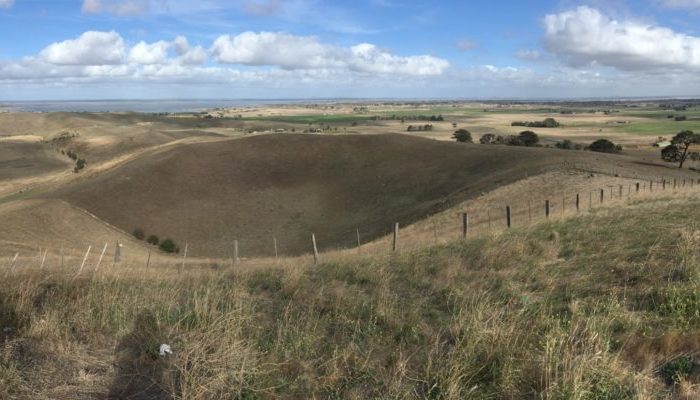
This edition of ‘Features from the field’ is brought to you by Sandra McLaren, a senior lecturer at the University of Melbourne. She will be talking about the volcanic activity and rocks in the Tower hill complex in Australia. Volcanic activity is one of the most spectacular manifestations of our tectonically active planet. Volcanic eruptions can be highly dangerous when they oc ...[Read More]
Features from the field: Bedding/Stratification
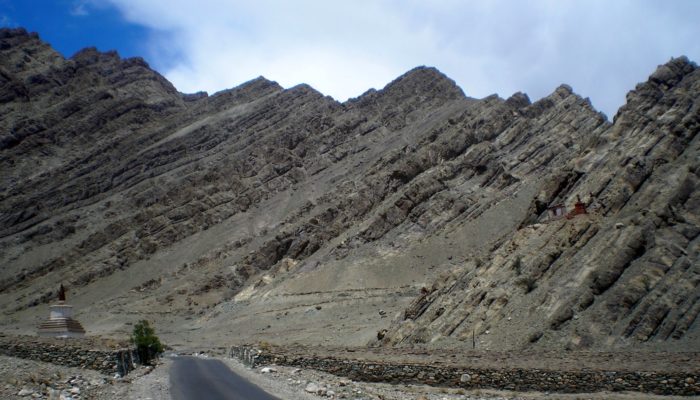
Bedding (also called stratification) is one of the most prominent features of sedimentary rocks, which are usually made up of ‘piles’ of layers (called ‘strata‘) of sediments deposited one on top of another. Every stratum is characterized by its own lithology (composition), sedimentary structures, grain size and fossil content that make it unique and different from the stra ...[Read More]
Features from the field: Ripple Marks
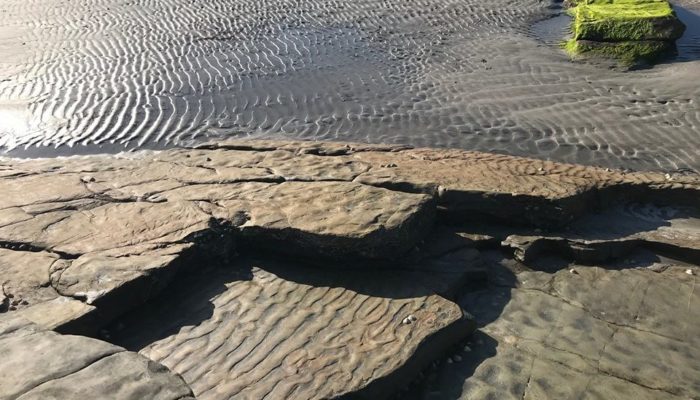
Earlier this year, Ian Kane, geologist at the University of Manchester, captured the iconic snapshot shown above. The picture reveals ripples, developed due to waves and currents in the sand of White Strand (near Killard, county Clare, Ireland) right next to Carboniferous sandstone that contains ‘petrified’ ripple marks! The image is powerful, because it shows the basic principle of geological act ...[Read More]
Features from the field: Foliation
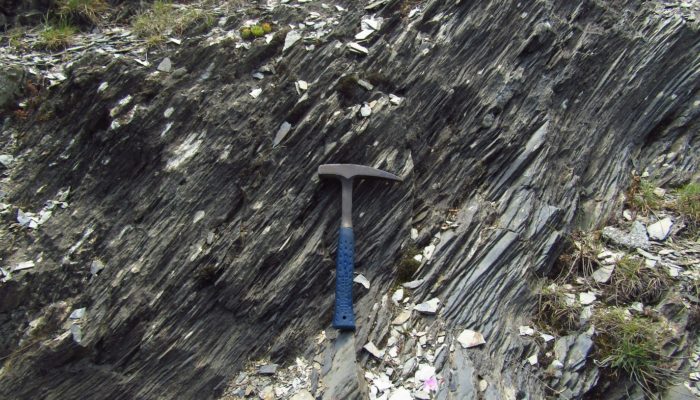
Have you ever walked on a mountain trail, passing past outcrops of rocks and noticed that many rocks appear to be split along a well-defined orientation? If you have, you might have seen one of the most important structures in metamorphic rocks – called foliation. The term ‘foliation’ derives from the Latin folium, meaning ‘leaf’. A rock with a foliation looks like a pile of R ...[Read More]
Features from the field: Boudinage
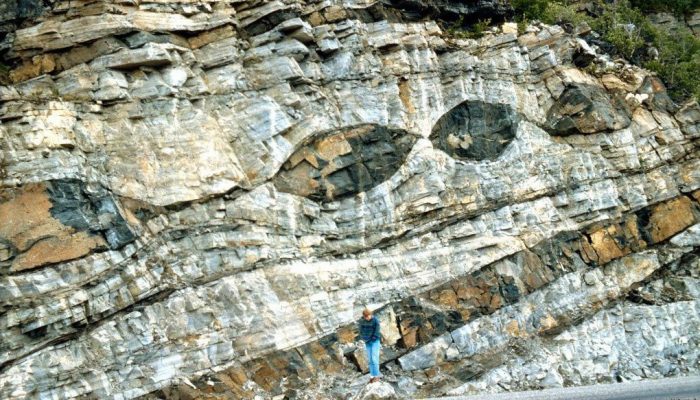
The Features from the Field series is back! In our previous posts, we have shown how rocks can deform during ductile deformation, producing folds. Folds very commonly develop in rocks when rock layers are shortened by tectonic forces in a specific direction. On the other hand, when layers are extended, we develop boudins. Boudins – the term comes from the French word for ‘sausage’ – are frag ...[Read More]
Features from the field: Folding
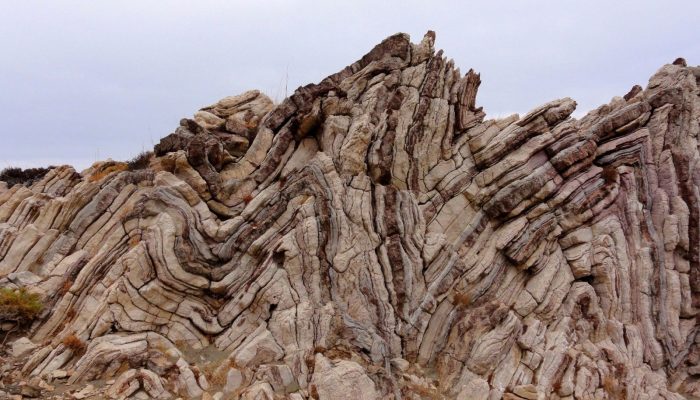
Folding is one of the most common geologic phenomena in the world. I should start with defining the term ‘deformation’ in order to understand the folding process better. In geology, deformation is an alteration of the size or shape of rocks. Deformation is caused by stress, the scientific term for force applied to a certain area. Stresses on rocks can stem from various sources, such as ...[Read More]
Features from the field: Strike Slip Faults Classification
A strike slip faults is a fault on which most of the movement is parallel to the fault strike (Bates and Jackson, 1987). The term ‘wrench fault’ is also popularized in some researchers. Sylvester (1988) suggest not using wrench fault term for defining strike slip fault as general term because wrench fault was defined by Anderson (1905) as deep seated, regional and vertical faults. Many major strik ...[Read More]
Features from the field: Growth Faults
Growth faults are syndepositional or syn-sedimentary extensional faults. Growth faults develop when sediments are being deposited, are key elements in understanding deformation processes. Indeed, successively deposited sedimentary layers are involved in the different stages of the growth of the structure and produce a record of the deformation history. Their fault plane dips mostly toward the basi ...[Read More]



